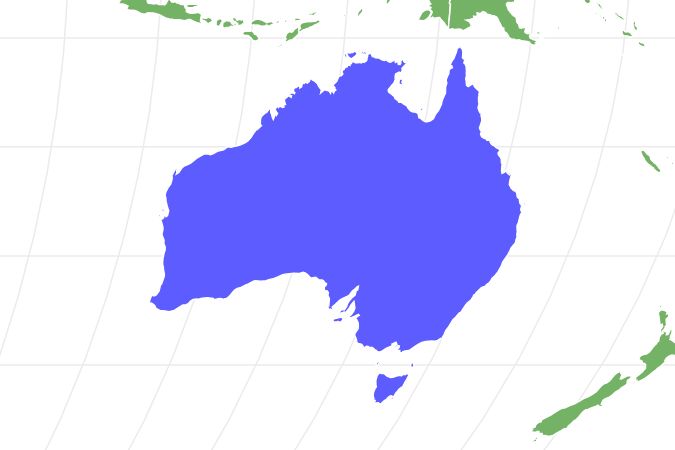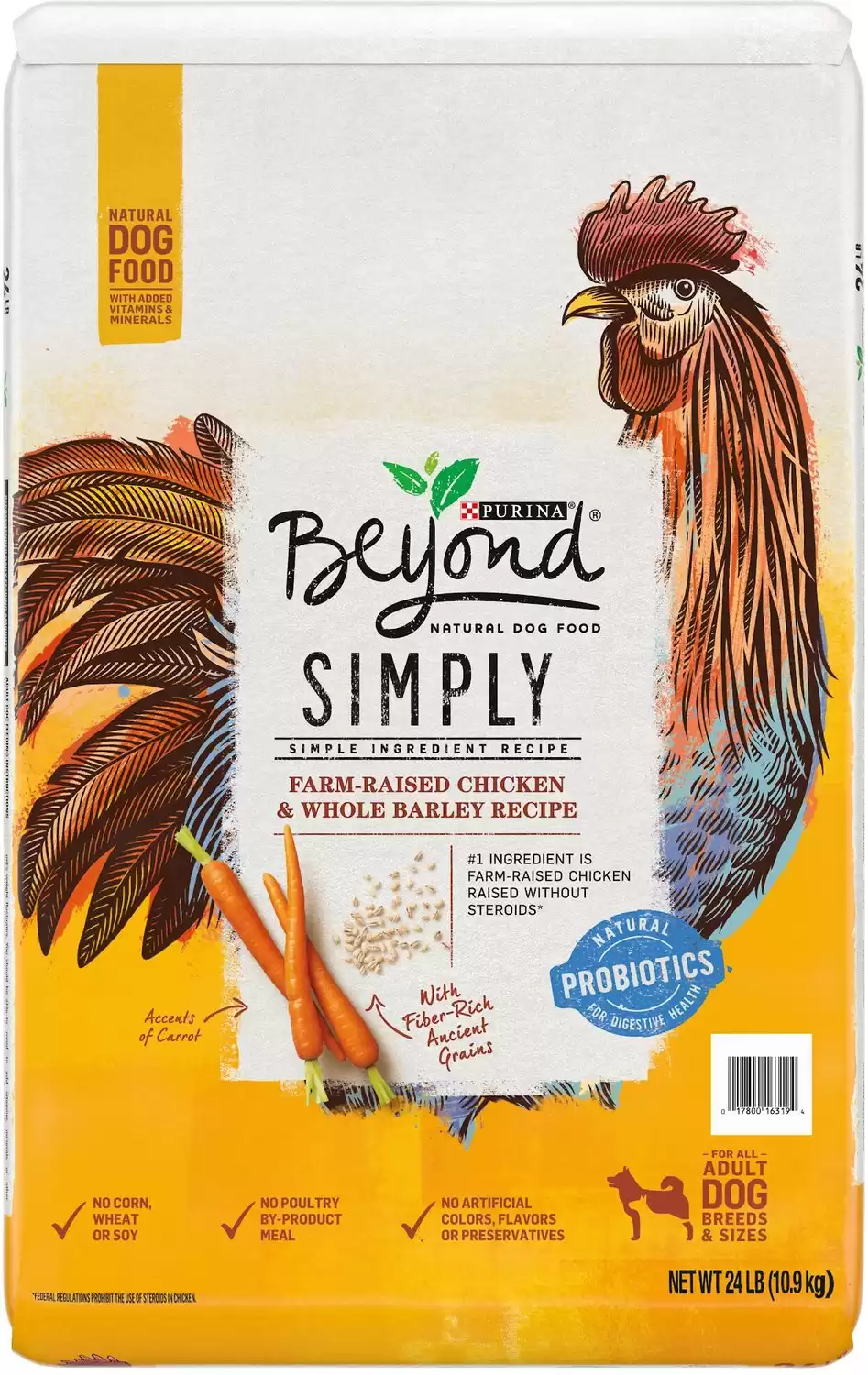Australian Terrier
Canis Lupus
Australian terriers originally came from Tasmania. They're a mix between Cairn, Yorkshire, Skye, Irish, and Dandie Dinmont terriers.
Advertisement
Australian Terrier Scientific Classification
- Kingdom
- Animalia
- Phylum
- Chordata
- Class
- Mammalia
- Order
- Carnivora
- Family
- Canidae
- Genus
- Canis
- Scientific Name
- Canis Lupus
Read our Complete Guide to Classification of Animals.
Australian Terrier Conservation Status
Australian Terrier Facts
- Fun Fact
- Australian terriers originally came from Tasmania. They're a mix between Cairn, Yorkshire, Skye, Irish, and Dandie Dinmont terriers.
- Temperament
- Courageous, energetic and confident
- Training
- Should be trained from an early age and respond best to fun and challenging training methods
- Diet
- Omnivore
Australian Terrier as a Pet:
- General Health
- Energy Level
- Shedability
- Trainability
- Intelligence
- Tendency to Chew
- Size
- Family and kid friendliness
- Yappiness / Barking
- High
- Separation Anxiety
- High
- Preferred Temperature
- Average climate
- Exercise Needs
- Moderate
- Friendly With Other Dogs
- High
- Pure bred cost to own
- $700
- Dog group
- Terrier
- Male weight
- 17-20 lbs
- Female weight
- 15-20 lbs
This post may contain affiliate links to our partners like Chewy, Amazon, and others. Purchasing through these helps us further the A-Z Animals mission to educate about the world's species.
View all of the Australian Terrier images!
Did you know that breeders developed the Australian terrier to help farmers protect produce and livestock? These energetic little dogs are worker dogs that control snakes, rats, foxes, mice, and other predators for owners.
A big dog was fit into a small package when it came to the Australian terrier. These terriers are smart, plucky, and spirited. This Aussie breed is self-assured and attacks life with curiosity and grit.
See all of our expert product reviews.
The Australian terrier has a harsh coat complimented by silky hair. These dogs are hypoallergenic, so you don’t have to worry about that silky hair shedding everywhere. This breed is an excellent watchdog and is very friendly, affectionate, and full of energy. Breeders developed these dogs in Australia in the early 19th century. Many people believe these terriers are the first documented native breed in Australia.
Being the littlest of the working terriers, don’t be fooled by the Australian terrier’s small size. These dogs are very tenacious and have the standard slant of life that other terriers have.
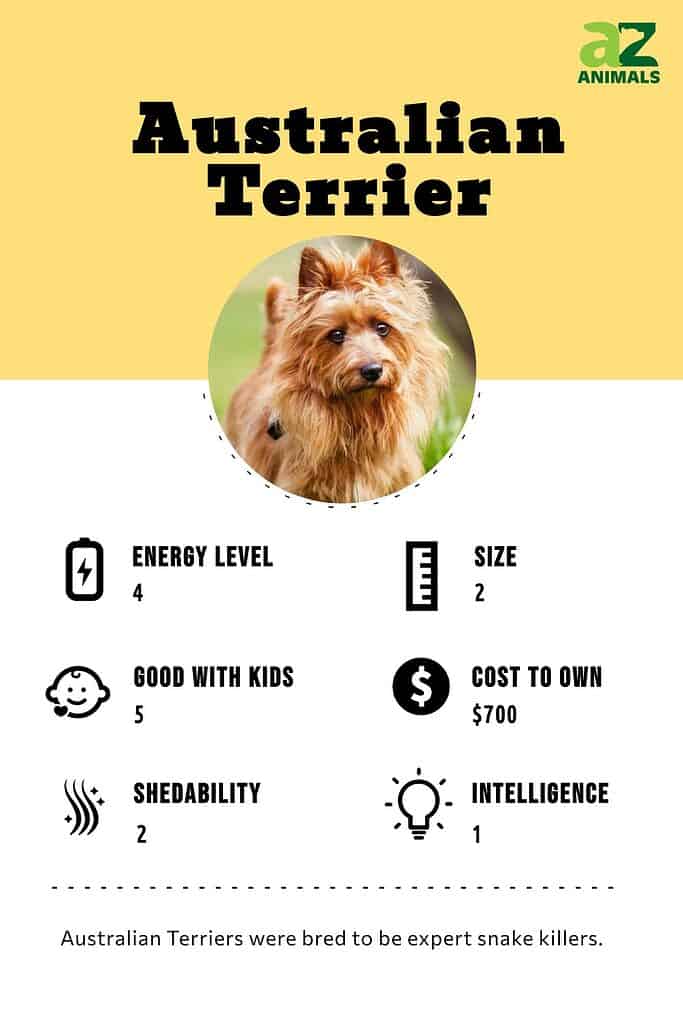
3 Pros And Cons of Owning an Australian Terrier
| Pros! | Cons! |
| Very healthy: There aren’t many deadly diseases linked to this breed. | Barks a lot: These little dogs bark a lot. So invest in some earplugs. |
| Travels well: Because of its small size, traveling with this dog is comfortable. | Chases small animals: You’ll need to make sure to keep your Australian terrier on a leash. |
| Friendly with pets: Australian terriers are very friendly and will get along great with other household pets. | Needs to be trained for life: Don’t get too comfortable. Training will be ongoing and nonstop. |

Australian terriers chase small animals. Keep them on a leash when outside.
©Lisjatina/Shutterstock.com
History and Origins
In the 19th century, British settlers brought with them a number of terrier breeds to Australia. It is believed that the Australian Terrier was created by crossbreeding various terriers from Great Britain, such as the Skye, Scottie, and Yorkshire terriers. The Australian Terrier was bred to be an effective and fearless hunter, taking on small mammals and snakes using a leaping twisting technique.
Health and Entertainment for your Australian Terrier
See all of our expert product reviews.
Living in the isolated areas of Australia created a strong bond between people and their Aussie Terriers. These courageous, small terriers were great companions after a hard day’s work. Even to this day, Aussies need to be around people and cannot be neglected as they need to be part of the family.
The Australian Terrier is often considered the national dog of Australia due to the fact that it was the first breed to be officially recognized in the country. The first club devoted to the breed was established in Melbourne in 1887, and afterward, exports of this breed were made in the United States and the United Kingdom. In 1933, the Kennel Club (England) gave the Aussie its official status, while the American Kennel Club officially recognized it in 1960.
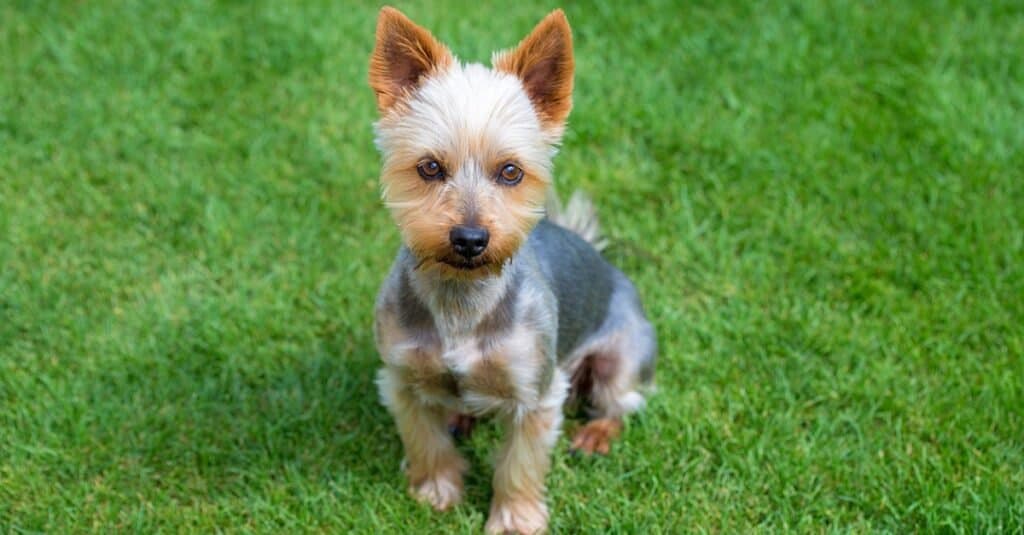
The Australian Terrier has been bred in Australia since the 1800s.
©boitano/Shutterstock.com
Size And Weight
Australian terriers are small, scrappy dogs with silky hair. According to the American Kennel Club, male Australian terriers weigh between 17-20 pounds. Female Australian terriers also weigh between 15-20 pounds.
Male Australian terriers are between 10-11 inches tall, while female Australian terrier is also between 10-11 inches tall.
| Height (male): | 10-11 inches |
| Height (female): | 10-11 inches |
| Weight (male): | 17-20 pounds |
| Weight (female): | 15-20 pounds |
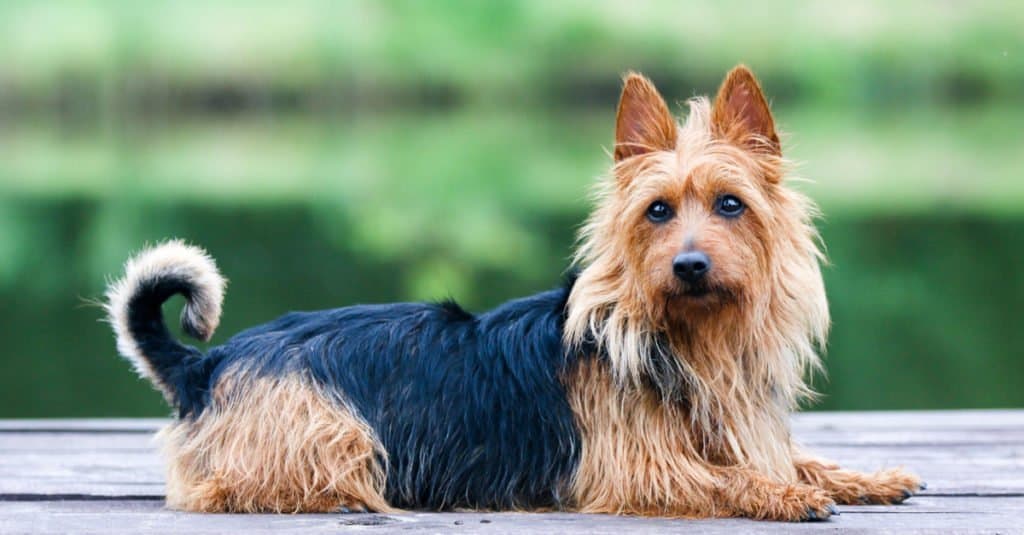
Australian Terriers usually weigh between 15-20 pounds.
©Lisjatina/Shutterstock.com
Common Health Issues
Although many people consider this breed to be very healthy, there are a few health risks associated with Australian terriers. Your puppy may inherit some illnesses from its parents. Equipping yourself with this general health knowledge may help prevent your dog from getting sick in the future.
Skin allergies causing itchy skin are common in Australian terriers. These allergies often cause bacterial infections that are called pyoderma.
Diabetes affects 10% of all Australian terriers, according to The Australian Terrier Club. The dog’s pancreas doesn’t make insulin, so the hormone has to take sugar from the blood and move it to cells that use it as fuel.
Digestive problems are related to your dog’s diet. Some symptoms are vomiting after eating, diarrhea, bad breath after cleaning, hungry after eating, or lack of energy. Early detection of these symptoms can help keep your pet healthy and strong.
To recap, a few common health issues in Australian terriers are:
- Skin allergies
- Diabetes
- Digestive problems
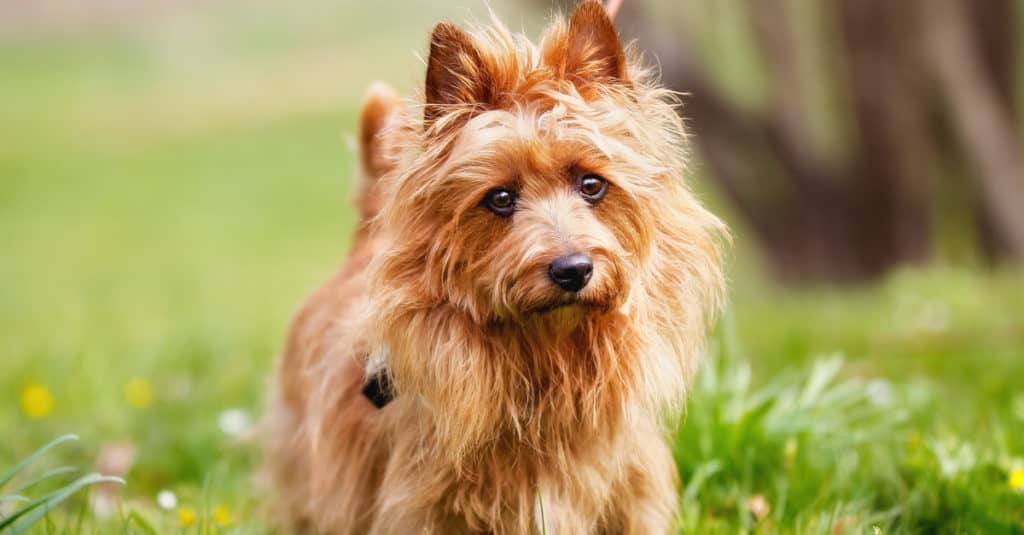
Australian Terriers are prone to skin allergies.
©BIGANDT.COM/Shutterstock.com
Temperament and Behavior
The behavior and traits of an Australian terrier give it a spirited and courageous personality. They are scrappy, even-tempered dogs that are persistent yet obedient. They will be your watchdog, and although they are small, they are brave enough and believe they can rescue you from danger. Australian terriers are quieter than most terriers and are always eager to please their owners.
Because these dogs are fun-loving, they make a great addition to families with energetic lifestyles. Australian terriers are curious and love playing with children. Because this breed is intelligent, it makes Australian terriers easy to train.
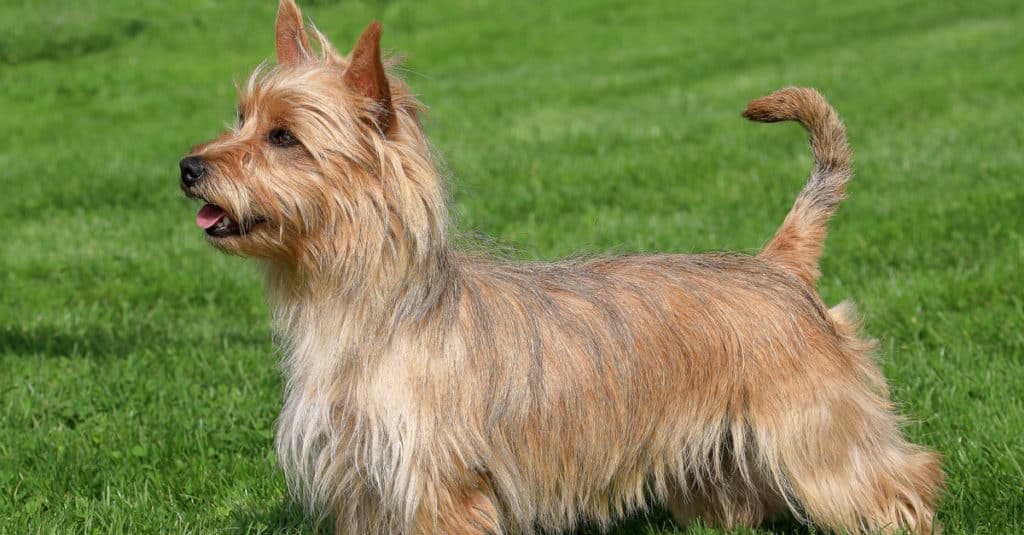
Australian Terrier are very friendly and will get along great with other household pets.
©Radomir Rezny/Shutterstock.com
How To Take Care Of Australian Terriers
Pet owners looking to care for Australian terrier puppies need to ensure their pet stays healthy. Make sure your Australian terrier has regular veterinarian check-ups. Maintaining healthy habits and the proper diet will ensure your pet stays happy and disease-free for years to come. Mixing dry and wet food with the right nutritional factors is a good idea as well.
The Best Dog Food for Australian Terriers
Naturally, the nutrients an adult Australian terrier needs are different from the nutrients puppies need.
Luckily, Australian terrier puppies aren’t picky eaters. In fact, they’ll eat pretty much anything you feed them. So to maintain a healthy diet, veterinarians recommend feeding puppies high-quality dry dog food. Choose the blends that are appropriate for your pet’s age and activity level.
Additionally, consider Australian terriers’ propensity for allergies and consider the selection of allergy-friendly and limited-ingredient dog foods.
Puppy, adult, and senior Australian terriers need a well-balanced diet. Specifically, a proper diet has essential vitamins, fats, minerals, nutrients, proteins, and carbohydrates. Like puppies, adult Australian terriers should eat high-quality food. Because this breed is prone to obesity, be sure not to overfeed your pet.
Ultimately, A-Z Animals says the best dog food or Australian Terriers is Purina Beyond Simply Natural Chicken Adult Dry Dog Food.
Firstly, the natural, limited-ingredient recipe stays away from allergy-inducing peas, lentils, potatoes, corn, wheat, and soy. Secondly, the kibble has natural probiotics for digestive health since Australian Terriers can have tummy struggles. Finally, it’s high-protein to satiate your dog’s hunger and minimize the blood sugar spikes and weight gain that can lead to diabetes.
Check Chewy or Amazon for this product.
Maintenance And Grooming
Australian terriers are hypoallergenic, so they barely shed ever. Comb your dog’s coat twice a week, or tangling can be a problem. Use a bristle brush and spray conditioner to prevent breaking. These dogs only have to bathe 3-4 times a year or when they are filthy.
Training
Because Australian terriers want to please their owners and are naturally compliant, training them is easy. Begin training your dog early and remain fair but firm.
Exercise
Environments suitable for Australian terriers are either apartments or homes with a backyard they can run freely and play with children. Forty-five minutes of exercise per day will be all your pet needs to exercise correctly. By mixing up walks with playtime, your dog will stay strong and healthy. You can achieve proper training for your dog with a good day of playing fetch and other activities and two short walks.

Australian Terriers need around 45 minutes of vigorous exercise per day.
©Lisjatina/Shutterstock.com
Puppies
While a newborn Australian terrier puppy’s immune systems mature, proper nutrition is essential. If the first few weeks of life, keep an eye on your pup’s weight. Look for signs of malnourishment or extreme weight gain.
You’ll have to control your puppy’s body temperature. The young pups can’t do it themselves, so this is an important consideration.

Because of its small size, traveling with the Australian Terrier is comfortable.
©boitano/Shutterstock.com
With Children
Australian terriers are very laid-back dogs. They get along well with children who are respectful of pets. Pairing your Australian terrier with older children is best. Australian terriers enjoy having playmates around and will blend perfectly with your family.
Dogs Similar to Australian Terriers
Three dogs similar to the Australian terrier are:
• Airedale Terrier: Like the Australian terrier, the Airedale is a hunting dog. They are courageous, independent, strong-minded, and intelligent. They can be easily trained and are very friendly.
• Cavalier King Charles Spaniel: Just like Australian terriers, these dogs are affectionate and playful. This breed is highly agreeable and makes a perfect family pet. There are numerous rescues in existence for both Cavalier adults and puppies.
• Dachshund: This breed is a small dog with an energetic and bold personality. Like Australian terriers, they are hunting dogs. They are affectionate and loyal to their family. Also, dachshunds are excellent guard dogs. Because dachshunds are short-haired dogs, they’re easy to groom.

Australian Terriers are good with children.
©I, Lilly M, CC BY-SA 3.0, via Wikimedia Commons – License
Popular Names
Ten popular names for Australian Terriers are:
- Bowen
- Beefcake
- Acacia
- Dolly
- Ciara
- Teddy
- Bayu
- Lutana
- Shadow
- Tirich
Australian Terrier FAQs (Frequently Asked Questions)
Are Australian Terriers herbivores, carnivores, or omnivores?
Australian Terriers are Omnivores, meaning they eat both plants and other animals.
What Kingdom do Australian Terriers belong to?
Australian Terriers belong to the Kingdom Animalia.
What class do Australian Terriers belong to?
Australian Terriers belong to the class Mammalia.
What phylum to Australian Terriers belong to?
Australian Terriers belong to the phylum Chordata.
What family do Australian Terriers belong to?
Australian Terriers belong to the family Canidae.
What order do Australian Terriers belong to?
Australian Terriers belong to the order Carnivora.
What genus do Australian Terriers belong to?
Australian Terriers belong to the genus Canis.
What type of covering do Australian Terriers have?
Australian Terriers are covered in Hair.
How many babies do Australian Terriers have?
The average number of babies an Australian Terrier has is 4.
What is an interesting fact about Australian Terriers?
Australian Terriers are spirited, alert, and courageous!
What is the scientific name for the Australian Terrier?
The scientific name for the Australian Terrier is Canis Lupus.
How do you groom An Australian terrier?
Because Australian terriers have double-layered coats, they don’t need much attention. Brushing a few times a week will stop matting and tangling. Bathing your dog every three months or when they’re dirty is all the grooming you’ll have to do.
Are Australian terriers good pets?
Australian terriers make great family pets. They are loving and obedient. These dogs love to play, so having children or other pets is a plus.
How much do Australian terriers cost?
The price for an Australian terrier puppy depends on the breeder’s location and reputation. Other factors to consider are breed lines, litter size, lineage, breed popularity, and much more. Australian terriers with papers but without show quality or breeding rights is $480.00.
Australian terriers with superior lineage have a premium price, and you should expect to pay between $1,200-$5,500.
On average, the price for an Australian terrier is $700.00.
If these prices are too much for your budget, there are other options like going to a rescue to find your furry friend.
Are Australian terriers yappy?
Australian terriers are not yappy. Of all terriers, they might be the mellowest. They are very obedient and quiet.
Are Australian terriers hypoallergenic?
Yes, Australian terriers are hypoallergenic. Because they are small and don’t shed much, they don’t produce much pet dander.
Are Australian terriers good with kids?
As stated before, Australian terriers are loving and affectionate. As long as the children in your house are well behaved, there should be no problems; Australian terriers will protect themselves from being hurt, so be sure to keep an eye on them around small children.
How long do Australian terries live?
The average life expectancy of Australian terriers is 12-15 years.
Thank you for reading! Have some feedback for us? Contact the AZ Animals editorial team.
Sources
- akc.org, Available here: https://www.akc.org/dog-breeds/australian-terrier/
- thesprucepets.com (2021) https://www.thesprucepets.com/australian-terrier-full-profile-history-and-care-4766868 https://dogtime.com/dog-breeds/australian-terrier#/slide/1
- jonesnaturalchew.com, Available here: https://www.jonesnaturalchews.com/australian-terrier-is-it-right-dog-for-you/#:~:text=Pros%20and%20Cons%20of%20Having%20an%20Australian%20Terrier.,no%20health%20issues%3B%20Cons%3A%20Needs%20plenty%20of%20exercise
- akc.org, Available here: https://www.akc.org/expert-advice/nutrition/breed-weight-chart/
- petful.com, Available here: https://www.petful.com/breeds/breed-profile-australian-terrier/#:~:text=Health%20Problems.%20MEDIUM%3A%20Although%20considered%20a%20healthy%20breed%2C,malformation%29%20Diabetes.%20Immune%20deficiencies.%20Skin%20allergies.%20Digestive%20problems.
- doglime.com, Available here: https://doglime.com/australian-terrier-behavior/#:~:text=The%20Australian%20Terrier%20has%20a%20temperament%20which%20is,are%20spunky%2C%20scrappy%2C%20persistent%20and%20full%20of%20personality.
- wikihow.com, Available here: https://www.wikihow.com/Care-for-an-Australian-Terrier#:~:text=%20How%20to%20Care%20for%20an%20Australian%20Terrier,Behavior.%20Socialize%20your%20dog.%20Australian%20Terriers...%20More%20
- petguide.com (2021) https://www.petguide.com/breeds/dog/australian-terrier/#:~:text=The%20Australian%20Terrier%20isn’t%20a%20picky%20eater%20–,proteins%2C%20and%20a%20source%20of%20fresh%2C%20clean%20water.
- akc.org, Available here: https://www.akc.org/dog-breeds/australian-terrier/
- pupjunkies.com, Available here: https://pupjunkies.com/dog-names/australian-terrier/
- akc.org, Available here: https://www.akc.org/expert-advice/news/raising-newborn-puppies/
- akc.org, Available here: https://www.akc.org/dog-breeds/australian-terrier/

